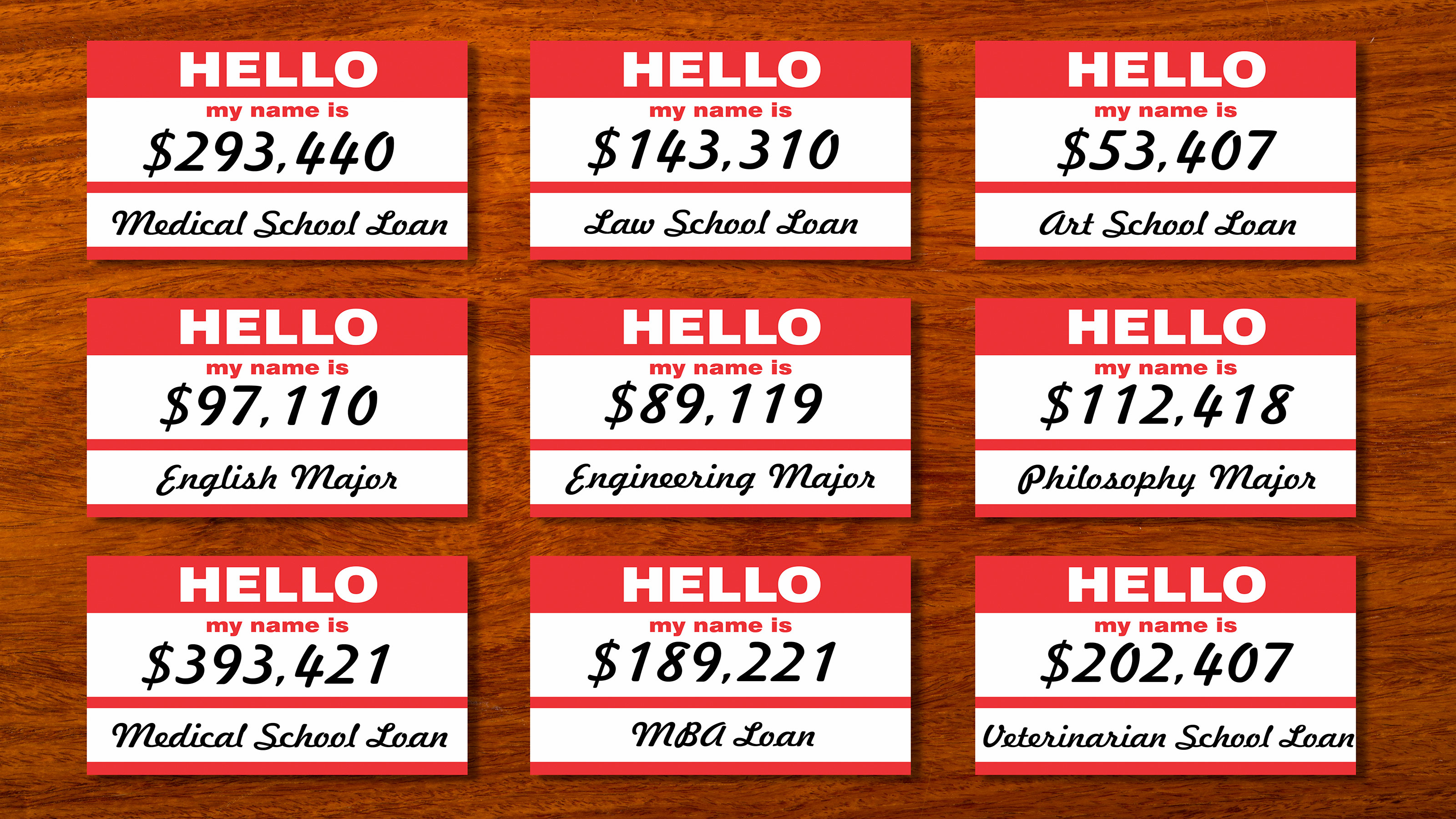Biden Extends Student Loan Relief, Is Loan Forgiveness Next?
On his first day as president, Joe Biden continued the suspension of student loan payments until October.


At the request of President Biden, the Department of Education is extending the pause on federal student loan payments and collections, and keeping the interest rate on loans at 0%, through the end of September 2021. The new president made the request hours after becoming the 46th President of the United States. This was something he pledged to do on "day one," and he followed through on that promise.
The CARES Act, which was enacted in March 2020, first suspended student loan payments until September 30, 2020, without penalty or interest for all federally owned loans. This covered over 95% of student loan borrowers. Collection activities against borrowers who were already behind on payments was also suspended.
At the time, most people thought the coronavirus crisis would be behind us by September 30. However, as the pandemic dragged on and got worse, the CARES Act student loan relief provisions were extended multiple times. The latest extension paused student loan payments until January 31, 2021. But with that date approaching, people with student loan debt were getting worried that payment requirements and interest would start up again while the pandemic is still raging. President Biden's action puts those fears to rest – at least until the end of September.
From just $107.88 $24.99 for Kiplinger Personal Finance
Be a smarter, better informed investor.

Sign up for Kiplinger’s Free Newsletters
Profit and prosper with the best of expert advice on investing, taxes, retirement, personal finance and more - straight to your e-mail.
Profit and prosper with the best of expert advice - straight to your e-mail.
[Stay on top of all the new stimulus bill developments – Sign up for the Kiplinger Today E-Newsletter. It's FREE!]
Student Loan Forgiveness?
The next big question for the Biden administration is whether to push for – or how hard to push for – student loan forgiveness. Although it wasn't included in President Biden's $1.9 trillion "American Rescue Plan" economic package, the new president supports a plan to forgive $10,000 or more of federally-backed student loan debt for each American (private student loan debt probably won't be eligible for forgiveness). Some progressives want more student loan debt forgiveness – up to $50,000 per person. However, we don't expect Biden to endorse anything near that level. He promised to release a second economic plan in February, and student loan forgiveness could be in that package.
President Biden has also said that forgiven student loan debt should not be subject to tax. Normally, the amount of any debt that is canceled, forgiven or discharged for less than the full amount you owe is taxable and must be reported on your tax return. There are a number of exceptions to this general rule, but in most cases forgiven student loans currently result in a higher tax bill. Expect any Biden plan to include an additional exception for any student loan debt he is able to cancel.
Other Possible Student Loan Relief Measures
As a candidate running for president, Biden also put out a plan that would lower or eliminate student loan debt by:
- Limiting student loan payments to 5% of a person's discretionary income (income minus taxes and essential spending like housing and food) over $25,000;
- Forgiving student loan debt for people who made payments for 20 years;
- Granting $10,000 of undergraduate or graduate student loan relief for every year of national or community service, up to five years; and
- Allowing the discharge of private student loans in bankruptcy.
President Biden's pre-election plan would also provide two years of community college or other high-quality training program without debt. The federal government would pay for 75% of the cost and states would cover the rest (the federal government would cover up to 95% of the cost for Indian Tribes operating community colleges serving low-income students). Biden also called for making public colleges and universities tuition-free for all families with incomes below $125,000.
In addition to student loan forgiveness, some of these ideas could make it into the second economic growth plan that the president will release in February.
Student Loans Paid by Employers
And there's some additional student loan relief that's already in the books. The CARES Act created a temporary income tax exclusion for up to $5,250 of student loan debt paid by your employer in 2020. However, the Taxpayer Certainty and Disaster Tax Relief Act, which was enacted in December, extended that tax break through 2025. The $5,250 cap applies to both student loan repayment benefits and other educational assistance (e.g., tuition, fees, books, etc.) offered by your employer.
Profit and prosper with the best of Kiplinger's advice on investing, taxes, retirement, personal finance and much more. Delivered daily. Enter your email in the box and click Sign Me Up.
Rocky Mengle was a Senior Tax Editor for Kiplinger from October 2018 to January 2023 with more than 20 years of experience covering federal and state tax developments. Before coming to Kiplinger, Rocky worked for Wolters Kluwer Tax & Accounting, and Kleinrock Publishing, where he provided breaking news and guidance for CPAs, tax attorneys, and other tax professionals. He has also been quoted as an expert by USA Today, Forbes, U.S. News & World Report, Reuters, Accounting Today, and other media outlets. Rocky holds a law degree from the University of Connecticut and a B.A. in History from Salisbury University.
-
 I Need to Free Up $1,000 in My Monthly Budget, and I've Already Given Up Starbucks and Dining Out. What Else Can I Do?
I Need to Free Up $1,000 in My Monthly Budget, and I've Already Given Up Starbucks and Dining Out. What Else Can I Do?Here are some creative ways to save up to $1,000 a month, even if you feel like you've already made all of the obvious cuts.
-
 Steps to Get You Through the Open Enrollment Jungle at Work
Steps to Get You Through the Open Enrollment Jungle at WorkWondering how to survive open enrollment this year? Arm yourself with these tools to cut through the process and get the best workplace benefits for you.
-
 I Want to Help Pay for My Grandkids' College. Should I Make a Lump-Sum 529 Plan Contribution or Spread Funds out Through the Years?
I Want to Help Pay for My Grandkids' College. Should I Make a Lump-Sum 529 Plan Contribution or Spread Funds out Through the Years?We asked a college savings professional and a financial planning expert for their advice.
-
 The Original Property Tax Hack: Avoiding The ‘Window Tax’
The Original Property Tax Hack: Avoiding The ‘Window Tax’Property Taxes Here’s how homeowners can challenge their home assessment and potentially reduce their property taxes — with a little lesson from history.
-
 Three Critical Tax Changes Could Boost Your Paycheck in 2026
Three Critical Tax Changes Could Boost Your Paycheck in 2026Tax Tips The IRS predicts these tax breaks may change take-home pay in 2026. Will you get over $1,000 in tax savings?
-
 What’s the New 2026 Estate Tax Exemption Amount?
What’s the New 2026 Estate Tax Exemption Amount?Estate Tax The IRS just increased the exemption as we enter into a promising tax year for estates and inheritances.
-
 IRS Updates 2026 Tax Deduction for People Age 65 and Older
IRS Updates 2026 Tax Deduction for People Age 65 and OlderTax Changes Adjustments to the extra standard deduction can impact the tax bills of millions of older adults. Here are some new amounts to know for 2026.
-
 IRS Reveals New 2026 Child Tax Credit and other Family Credit Amounts
IRS Reveals New 2026 Child Tax Credit and other Family Credit AmountsTax Credits Key family tax breaks are higher for 2026, including the Earned Income Tax Credit and the Adoption Credit. Here's what they're worth.
-
 Standard Deduction 2026 Amounts Are Here
Standard Deduction 2026 Amounts Are HereTax Breaks What is the standard deduction for your filing status in 2026?
-
 Claiming the Standard Deduction? Here Are Five Tax Breaks for Retirement in 2025
Claiming the Standard Deduction? Here Are Five Tax Breaks for Retirement in 2025Tax Tips If you’re retired and filing taxes, these five tax credits and deductions could provide thousands in relief (if you qualify).
